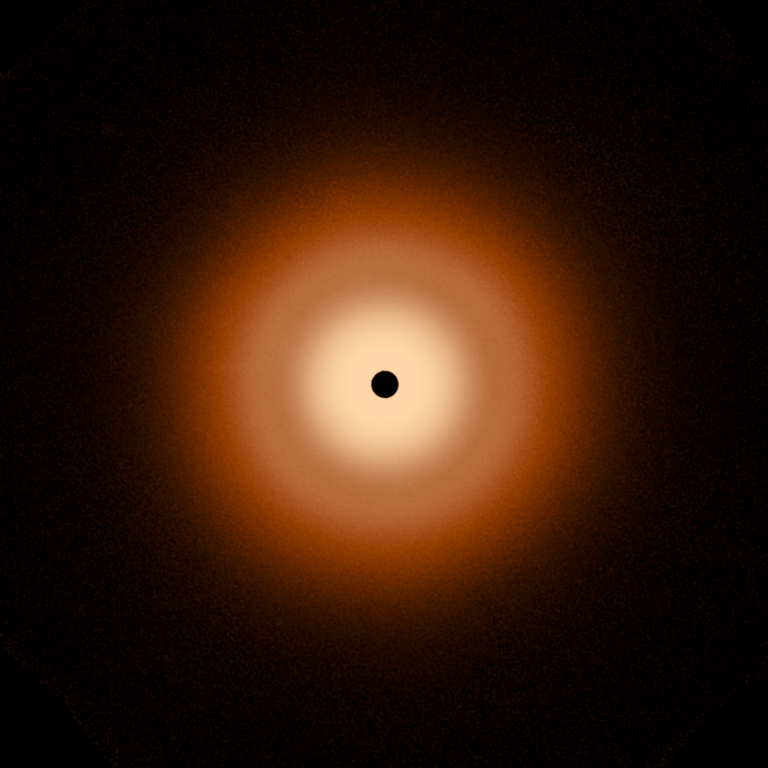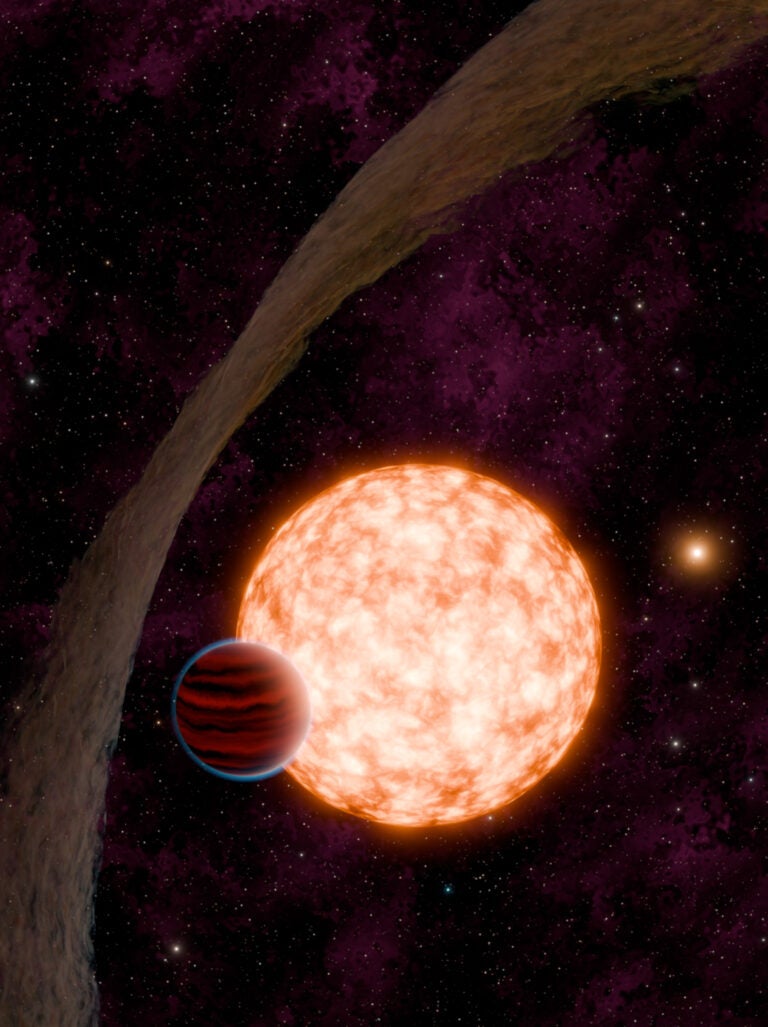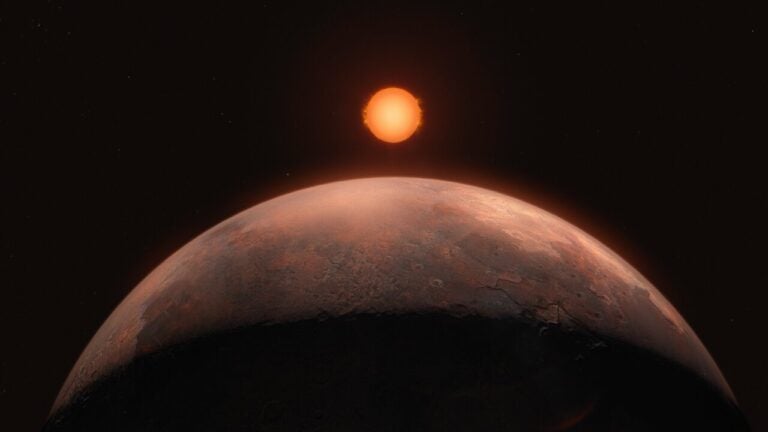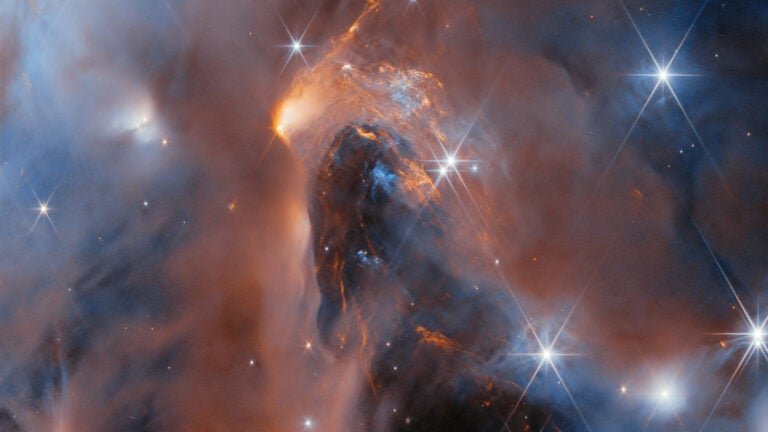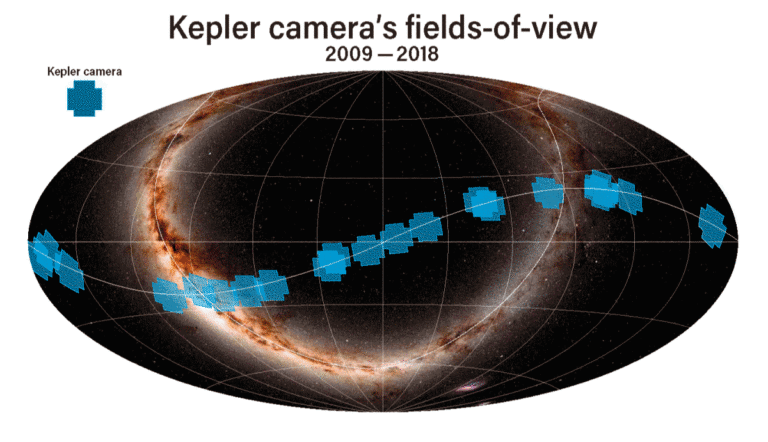But this isn’t the only way to look for a planet. In addition to the “wobble” — or “radial velocity” — method, programs in space and on the ground will be using a variety of techniques to look for undiscovered exoplanets. Read on for a description of each exoplanet-hunting method.
So far, the radial velocity method is the most successful way to find extrasolar planets. Also called Doppler spectroscopy, this planet detection tool involves measuring small changes in the light waves emitted by a star.
When a star moves closer to us, it emits light with a shorter wavelength. When it moves further, it emits longer wavelengths. Longer wavelengths are characteristic of the red end of the light spectrum (think of the red end of a rainbow), so that when the star is moving away it is “red shifted.” Shorter wavelengths are characteristic of the blue end, so the star is “blue shifted” when moving closer. This phenomenon is known as the Doppler effect.
By noting the back and forth motions of a star through the Doppler effect, astronomers can determine if a star is “wobbling” from the influence of an orbiting planet.
Planet hunters can also try to directly measure changes in a star’s position induced by a planet. With this method, called astrometry, the star’s location is compared to the positions of more distant stars, which are so far away they appear fixed. If the star moves over time, the gravitational tug of an extrasolar planet is probably at work. Future planet-hunting missions hope to use astrometry to detect Earth-sized extrasolar planets.
An alternative to looking for stellar motions is the transit method, which watches for slight dips in the amount of light received from a star. When a planet swings in front of a star, it blocks a bit of the star’s light. Using highly sensitive instruments, astronomers can detect the minute change in brightness. When the dimming occurs at regular intervals (each time the planet blocks the sun during its orbit), a new extrasolar planet can be added to the list of knowns.
In addition, the amount of the dimming gives clues about the planet’s size, and the time between dimming episodes tells astronomers about the planet’s orbit.
Future planet-hunting missions can also try to block a star’s light to try to see the light reflected by extrasolar planets. They could do this by using either the “nulling” method or a coronagraph.
With the nulling method, astronomers would use an interferometer to cancel out much of the light emitted from a star. The interferometer would “interfere” with the star’s light waves so that the waves’ high points (crests) and low points (troughs) met with the opposite parts of other light waves. When a crest meets a trough, they cancel each other out, and vice versa, taking those light waves out of the picture. (You may have seen this phenomenon in action with water waves.) When the star’s light is cancelled out, astronomers hope to spot infrared light reflected by an extrasolar planet.
A coronagraph works in a similar way. Astronomers can use a physical mask to block out everything but a star’s corona and the light reflected by orbiting planets.






